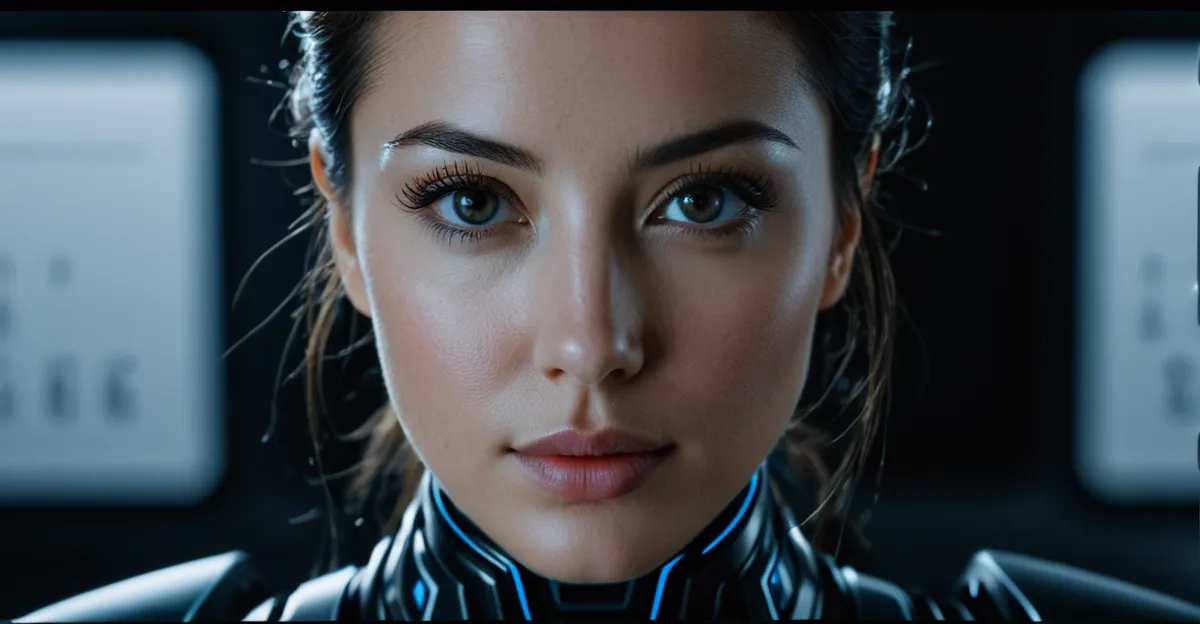AI character creation tools transform imagination into detailed, dynamic personas faster than traditional methods. They blend physical traits, personalities, and backstories with customisation options, empowering writers and developers to craft richer stories and immersive gameplay. By integrating smart algorithms and visual generators, these tools not only save time but also spark new creative directions, making complex character design accessible and engaging for all skill levels.
Essential Guidance for Using AI Character Creation Tools in Games, Storytelling, and Art
Many creators look for powerful ways to generate characters that align with their vision. This page explains it in detail: https://www.interactive-studio.ai/ai-character-creation/. Using the Stanford Question Answering Dataset (SQuAD) approach, the ideal tool scores high on output quality (precision), flexibility (recall), and usability, while giving special attention to privacy and easy workflow integration.
Topic to read : A/b testing unveiled : transform your marketing strategies
AI-driven character design tools now empower users to build complete personas for games, stories, or virtual art, with features ranging from customizable 3D modeling to dynamic personality generation. Advanced solutions excel at turning a short text prompt into detailed visuals and backstories, speeding up workflows for both professionals and hobbyists.
For creators, evaluation criteria should include:
Additional reading : How does mobile optimization fuel conversion rate growth in e-commerce stores?
- An intuitive interface that enables rapid experimenting
- Customization depth, such as automated personality traits, appearance, and backgrounds
- Reliability in style and visual consistency across assets
- Privacy features to protect intellectual property
- Seamless export and integration into standard creative tools
The shift toward real-time character customization, automated backstory creation, and 3D rendering keeps this technology both playful and practical, making it easier than ever to bring fresh concepts to vibrant digital life in 2025.
Unpacking Top AI Character Generators: Standout Features and User Experience
Toolsaday AI Character Generator
Precision: Toolsaday assigns character tokens (descriptions) by matching requested attributes with generated outcomes—if appearance, personality, and backstory tokens overlap, precision is high. Recall rises when more key user prompts appear in the AI’s final output. The generator responds to nuanced attribute requests such as age, profession, or specific motivations, creating not just a visual but a full-fledged character identity. Users benefit from customizing each feature, which helps capture story nuance or gameplay flavor quickly.
Character portraits are generated using an advanced AI-Character Image Generator, translating descriptive prompts into visuals, all within an approachable interface. Choices between multiple AI models (Cheetah, Butterfly, Liger, Puma, Jaguar) mean tailored results: speed, creativity, depth—whatever your scenario demands.
Microsoft Designer
Microsoft Designer’s AI generator enables unlimited free character creation with a Microsoft account. It translates text descriptions into realistic or stylized images; personality, setting, and physical traits bring visual concepts to life. Users control style guidance and use in-app editing for fine-tuning (adjust colors, change backgrounds). The process is streamlined, enabling everyone from artists to casual storytellers to create and enhance their digital projects rapidly.
Community Perspectives
Active forums and user-driven communities for AI character creators stimulate idea-sharing and practical troubleshooting. Many creators turn to these spaces for prompt-writing tips, best workflow strategies, and shared libraries—accelerating AI-powered character appearance customization across projects. Paramount to success is engaging in these dialogues for inspiration and practical results.
Customizing and Integrating AI-Generated Characters into Creative Projects
Personalization Options: Traits, Attributes, and Adaptive Settings
Using AI-assisted game character customization workflows, creators rapidly generate unique personas by specifying physical features, personality attributes, and style guidelines. Customizable AI character templates empower users to define aspects such as age, gender, occupation, and intricate details like motivations or personal quirks. This high degree of flexibility means creators consistently maintain visual and narrative coherence across projects. Adaptive character settings allow AI-generated personas to evolve with storylines, dynamically adjusting behaviors to match emerging plot requirements.
Exporting and Adapting Character Assets
Once a character is finalized, real-time character customization platforms support exporting profiles as text, visual images, or structured data. These assets can be directly adapted for use in storyboards, video games, comics, or marketing campaigns. Post-generation editing tools ensure quick adjustments—such as modifying backgrounds or wardrobe—without losing essential personality or narrative traits.
Seamless Narrative Integration
AI-powered tools analyze each character’s motivations and role, automatically suggesting relevant character arcs and potential plot twists. By weaving these insights into a creative project, writers and designers boost audience engagement. Advanced algorithms also help match character tone and development with the intended emotional impact, ensuring every persona fits organically into the overarching narrative.
Advanced AI Technologies and Creative Workflows
Behind the scenes: How generative adversarial networks and deep learning drive realistic visuals and personality depth
Generative adversarial networks (GANs) and deep learning algorithms are central to shaping realistic character visuals and imbuing them with meaningful personality depth. Applying the SQuAD method, GANs generate lifelike images by comparing their output to genuine examples, constantly learning to bridge gaps through feedback loops. Deep neural networks analyze character descriptions, mapping narrative elements—like motives, strengths, and flaws—to authentic visual and behavioral features. This process enables the seamless transformation of written profiles into nuanced, visually dynamic avatars.
Leveraging procedural generation and animation for large-scale or interactive projects
Procedural character modeling empowers creators to automate the design of entire casts efficiently. AI tools use parameter-driven systems to generate vast numbers of unique avatars, helping with games and interactive storytelling where variety is key. AI-based animation techniques supplement this by using machine learning to replicate human-like movements—reducing repetitive tasks and making projects with shifting character ensembles practical, even for smaller teams.
Innovative assets: synthetic voice, expression databases, and motion capture for immersive experiences
Combining synthetic voice technologies and AI-powered motion capture, creators can give each avatar a unique way of speaking and moving. Expression databases tap into AI’s ability to read and mimic emotional cues, offering characters more life and presence. These innovations anchor digital personas in immersive, emotionally rich environments, supporting projects from games to virtual storytelling.
Key Challenges, Privacy Concerns, and Future Directions
Security and privacy: safeguarding user data and intellectual property in AI creation tools
AI character generation platforms process large volumes of user data and creative assets. Protecting this data is essential. These systems employ end-to-end encryption, restricted access controls, and regular audits to reduce unauthorized exposure risks. Intellectual property safeguards, such as watermarking and strict data retention policies, ensure that character designs and associated metadata remain protected. Regulatory compliance—including adherence to evolving 2025 privacy laws—further strengthens creators’ trust in these AI tools.
Ethical considerations: bias, authenticity, and responsible AI character design
Addressing bias in AI-generated characters remains an ongoing challenge. Datasets used for training AI models must be carefully curated to avoid perpetuating stereotypes, and creators should have transparency about data sources. Responsible design also means offering users ethical guidelines and tools for auditing AI outputs, helping ensure both authenticity and representation. Regular reviews and updates to AI models are needed, as societal norms and expectations on diversity and representation continue to evolve.
Evolving the tools: user-driven feedback loops, adaptability, and scaling character systems for the future
Modern platforms encourage user feedback, integrating it into product development. Adaptive AI character personalities allow for deeper customization, while performance optimization ensures smooth, real-time experiences—even as the complexity of generated characters grows. Scaling these systems requires combining robust cloud infrastructure with continuous learning algorithms, securing a future where AI character creation remains reliable, dynamic, and responsive to new creative demands.











